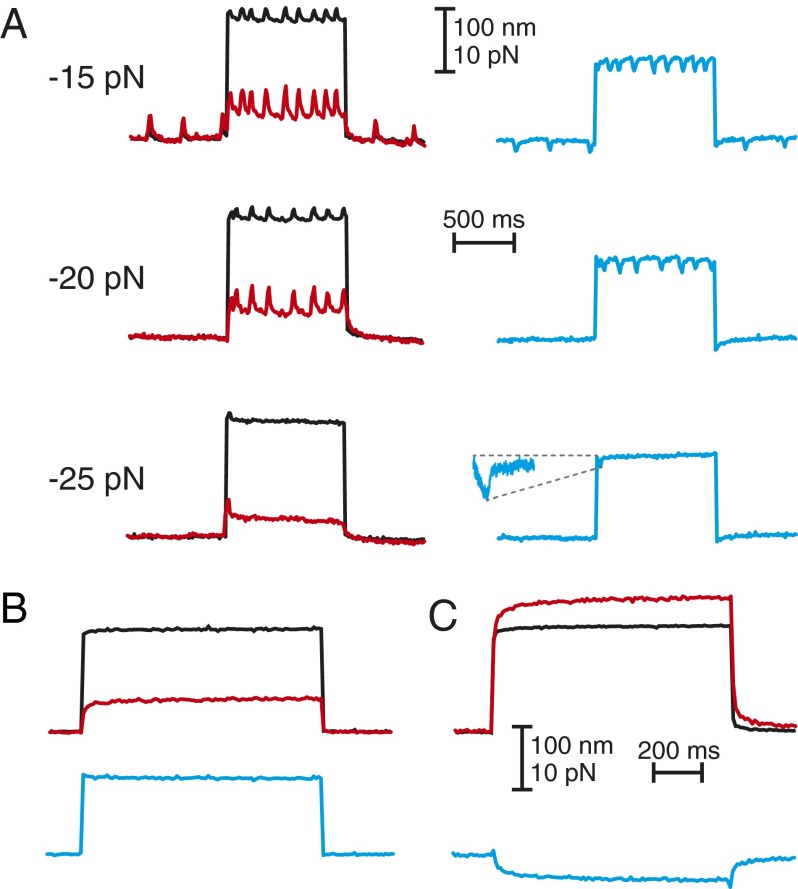Fig. 5.
Responses to force pulses. (A) Movement of a stimulus fiber’s base (black) subjected a large hair bundle under a load stiffness of 40 µN·m−1 to a force pulse. For constant forces of −15 and −20 pN, the bundle’s response (red) to the force (blue) displayed an increase in the rate of spontaneous oscillation. For a constant force of −25 pN, the bundle responded to a positive force pulse with a twitch and a negative force transient of 1.2 pN that decayed with a time constant of 5 ms (Inset). (B) When a large hair bundle was subjected to a stiffness of 100 µN·m−1 and a constant force of −66 pN, a positive force pulse elicited a response (red) smaller than the displacement of the fiber’s base (black). The force applied by the fiber during the pulse (blue) was therefore positive. (C) When the constant force was increased to −100 pN, a positive force pulse (black) elicited a response (red) exceeding the displacement of the fiber’s base; the force applied by the fiber (blue) was accordingly negative. The stiffness and damping coefficient of the stimulus fiber were respectively 105 µN·m−1 and 71 nN·s·m−1 (A) or 425 µN·m−1 and 53 nN·s·m−1 (B and C).

